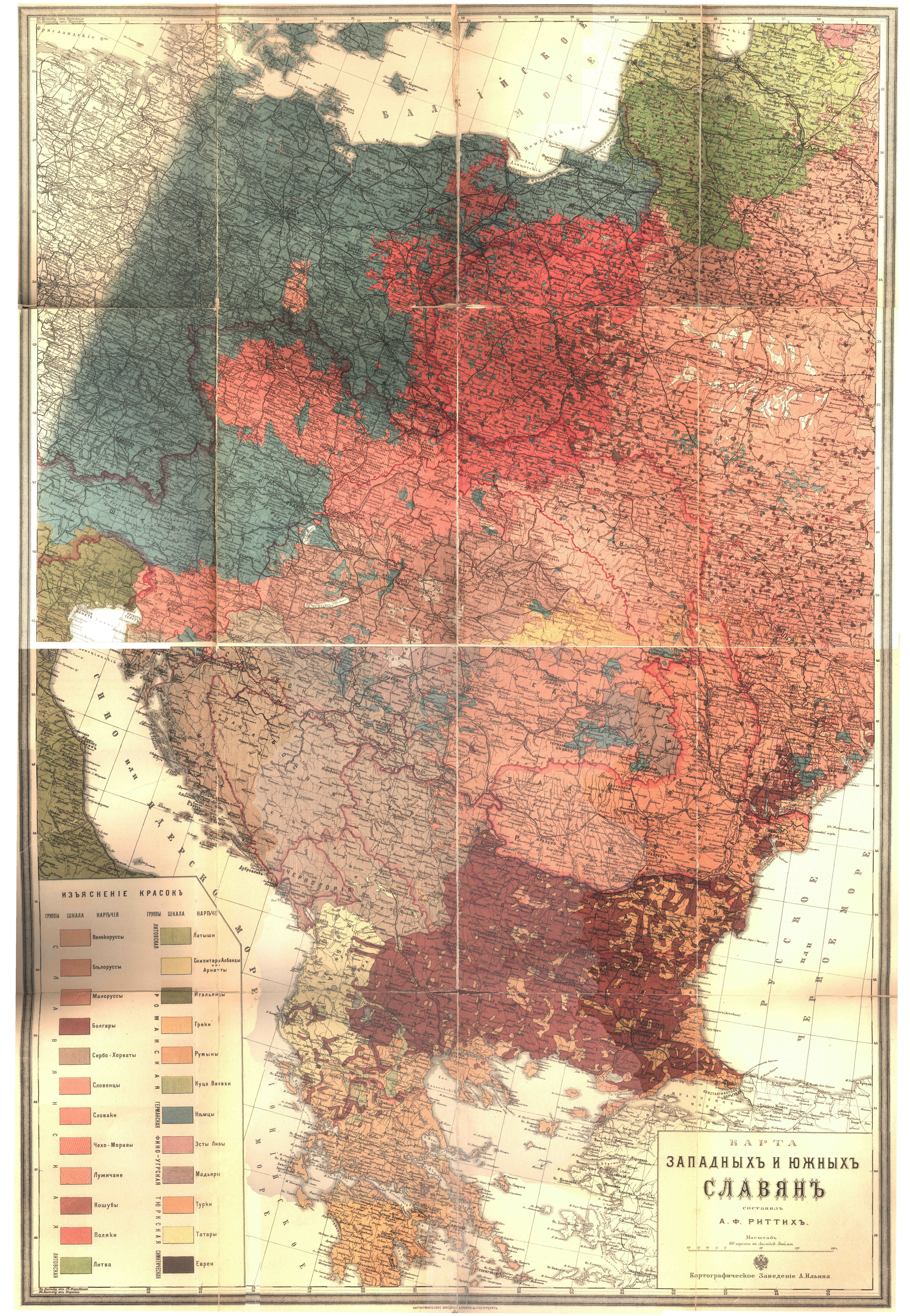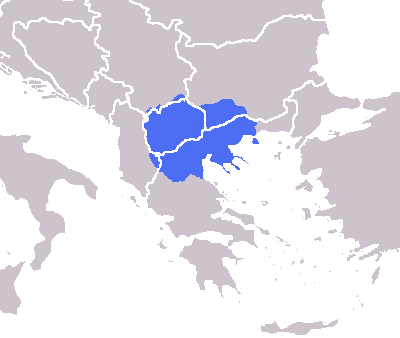Originally posted by Amphipolis
View Post
Population of Macedonia and Adjacent Areas
Collapse
X
-
1 y 2 Tesalonicenses, By Eugenio Green
Translation of interesting parts from bottom of pg 18, and top of pg 19:
After the conquest of Macedonia in 168, Rome needed the means to consolidate its power over the new acquisition. Via Egnatia allowed the free movement of troops and agents of the Roman administration for the conquered territory on a durable and passable road at all times.
In addition, Via Egnatia served as a means to control the security of the region. Many tribes populated the regions around the road. Cicero, in one of his invectives written from Thessalonica in the middle of the first century BC, accused L. C. Piso Caesoninus (the Roman proconsul), of not having maintained security on the road.
The barbarians, he said, are so harrassing this province that the people of Thessalonica, living in the very heart of our power, had to leave their city and strengthen their citadel. But not only the barbarian invaders endangered our great military path that passes through Macedonia to the Hellespont, but also the camps of the Thracians are all around.
Furthermore, regarding Via Egnatia and its function we read towards the bottom of the pg 19 as follows:
It was an immigration channel, allowing Roman settlers to pass unhindered to their new homes in Macedonia, the colonies of Pella and Philippi. But evidence has also been preserved of the presence of Roman citizens in several other cities in Macedonia, such as Akanthos, Domenai, Styberra, Edessa and Thessalonica. An inscription in Berea, which honors the proconsul Piso, bears the name of "the Roman residents there".
It seems evident that - during Cicero's epoch - the tribes living around Via Egnatia (from Macedonia to the Hellespont) were Thracians. Cicero also makes mention of some other barbarians constantly harrassing the province (Were they coming from the north? Were they Illyrians?). Via Egnatia enabled and was an immigration channel for settlement of numerous Roman colonists throughout Macedonia.Last edited by Carlin; 05-25-2017, 11:08 PM.
Comment
-
-
That is very odd indeedOriginally posted by maco2envy View PostA very interesting ethnographic map... Odd that Macedonian is not labeled under the slavic languages...
 I know of two tragic histories in the world- that of Ireland, and that of Macedonia. Both of them have been deprived and tormented.
I know of two tragic histories in the world- that of Ireland, and that of Macedonia. Both of them have been deprived and tormented.
Comment
-
-
I posted this map a couple of months ago in a different thread
Originally posted by Niko777 View PostA detailed map published in Warsaw by a Russian ethnographer (Александр Фёдорович Риттих) in 1885 showing the Slavic population of the Balkans. This map was a product of many years of research he conducted during the 1800s. You can see the villages in Epirus, Thessaly, and Halkidiki where he found elderly people who still had knowledge of their native Slavic dialects. By 1900 they were completely lost and assimilated by the surrounding populations.

Comment
-
-
I believe where Bulgaira would of been, is written 'Rumelia'. Also notice a different shade is used when highlighting Macedonian, differentiating it from Bulgarian and Serbian or is that just fade from age?Originally posted by Niko777 View PostI posted this map a couple of months ago in a different threadI know of two tragic histories in the world- that of Ireland, and that of Macedonia. Both of them have been deprived and tormented.
Comment
-
-
Originally posted by Liberator of Makedonija View PostI believe where Bulgaira would of been, is written 'Rumelia'. Also notice a different shade is used when highlighting Macedonian, differentiating it from Bulgarian and Serbian or is that just fade from age?
It's a fade

Comment
-
-
Hi LoM,Originally posted by Liberator of Makedonija View PostKumanovo is named after these Cumans.
Indeed - here are some additional citations.
1) The Byzantine Turks, 1204-1461, Rustam Shukurov
URL:
 In The Byzantine Turks, 1204–1461 Rustam Shukurov offers an account of the Turkic minority in Late Byzantium including the Nicaean, Palaiologan, and Grand Komnenian empires. The demography of the Byzantine Turks and the legal and cultural aspects of
In The Byzantine Turks, 1204–1461 Rustam Shukurov offers an account of the Turkic minority in Late Byzantium including the Nicaean, Palaiologan, and Grand Komnenian empires. The demography of the Byzantine Turks and the legal and cultural aspects of
Pages 170 and 171: The Vardar Valley, Skopje, Strumica
- Kumanski Brod near Skopje
- Kumanicevo in the southern part of the valley of the Vardar
- Kumanova southeast of Skopje
The Asians of Palaiokastron in the Strumica region were mostly of Qipchaq descent as well:
- Komanos
- Two women by the name of Komanka
- And very likely Turkopulos
2) Radic Radivoj, "Кумани", 2008
URL:
- After the Mongol invasion, the influx of Cumans into the "Byzantine" regions increased. In the year 1241, John III Vatatzes settled 10,000 Cumans in Thrace and Asia Minor, and in 1259 the Cuman contingents played a major role in the battle of Pelagonia. One of the best "Byzantine" warlords of the 14th century, Sirgian, was at least half-Cuman -- his father was a Cuman.
3) Unrelated to the Cumans, but adding it here.
"... northwards into Macedonia pure Greeks are no longer to be found. All the communities which are included under that designation are Wallachs; or Romounoi, as they call themselves -- Greco - Wallachs, as they are called by the Hellenes."
Twixt Greek and Turk; Or, Jottings During a Journey Through Thessaly ..., By Sir Valentine Chirol, Year 1881
URL:
Last edited by Carlin; 01-18-2018, 07:44 PM.
Comment
-
-
a history of greece from its conquest by the romans to the present time, By george finlay
URL:
Page 76:
- The legion of the guards, which usually did duty on the outer walls of the great palace at Constantinople, was commanded by Constantine Opos. The Macedonian legion, recruited in great part from the Sclavonian population of that province, was under the orders of Antiochos.
- The contingent of Turkish troops, from a colony settled near Achrida, to overawe the Sclavonian population, and keep open the communication with the Adriatic by the Via Egnatia, was led by Tatikios, an active and able soldier, son of a Saracen who had been taken prisoner by John Comnenus, the emperor's father.
Comment
-
-
From a Bulgarian book - writing to Tsanoff on March 7, 1879, Rev. J.H. House, among many other things, states the following about Macedonian Greeks:Originally posted by Carlin15 View PostHi LoM,
Indeed - here are some additional citations.
1) The Byzantine Turks, 1204-1461, Rustam Shukurov
URL:
 In The Byzantine Turks, 1204–1461 Rustam Shukurov offers an account of the Turkic minority in Late Byzantium including the Nicaean, Palaiologan, and Grand Komnenian empires. The demography of the Byzantine Turks and the legal and cultural aspects of
In The Byzantine Turks, 1204–1461 Rustam Shukurov offers an account of the Turkic minority in Late Byzantium including the Nicaean, Palaiologan, and Grand Komnenian empires. The demography of the Byzantine Turks and the legal and cultural aspects of
Pages 170 and 171: The Vardar Valley, Skopje, Strumica
- Kumanski Brod near Skopje
- Kumanicevo in the southern part of the valley of the Vardar
- Kumanova southeast of Skopje
The Asians of Palaiokastron in the Strumica region were mostly of Qipchaq descent as well:
- Komanos
- Two women by the name of Komanka
- And very likely Turkopulos
2) Radic Radivoj, "Кумани", 2008
URL:
- After the Mongol invasion, the influx of Cumans into the "Byzantine" regions increased. In the year 1241, John III Vatatzes settled 10,000 Cumans in Thrace and Asia Minor, and in 1259 the Cuman contingents played a major role in the battle of Pelagonia. One of the best "Byzantine" warlords of the 14th century, Sirgian, was at least half-Cuman -- his father was a Cuman.
3) Unrelated to the Cumans, but adding it here.
"... northwards into Macedonia pure Greeks are no longer to be found. All the communities which are included under that designation are Wallachs; or Romounoi, as they call themselves -- Greco - Wallachs, as they are called by the Hellenes."
Twixt Greek and Turk; Or, Jottings During a Journey Through Thessaly ..., By Sir Valentine Chirol, Year 1881
URL:
https://books.google.ca/books?id=bjU...mounoi&f=false
"... in general those who call themselves Greeks, are either Vlachs or Grecianized Bulgarians." (Tsanoff, A.S., Bulgaria in the Eastern Question)Last edited by Carlin; 02-25-2018, 09:24 PM.
Comment
-





Comment